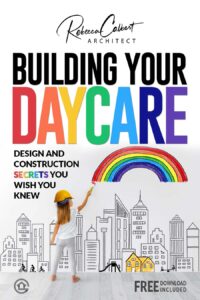In the world of childcare, creating exceptional facilities is essential for providing the best care and early childhood education for our little ones. That’s exactly what we do at ADA Architects, Inc. Our mission is to design safe, secure, engaging, and comfortable settings that cater to the unique needs of each child. With over 15 years of experience in childcare architecture, we have successfully worked with clients in major cities and prototype designs for suburban and rural areas. We take pride in our ability to combine expertise with a commitment to quality care. Let us introduce you to our talented division leader, James Kassay, and together, we can help bring your childcare visions to life.
Creating exceptional childcare facilities for every precious child
Creating safe, secure, and engaging childcare facilities is paramount when it comes to providing optimal care and early childhood education for precious little ones. At our childcare facility design division, we understand the importance of creating exceptional spaces that cater to the unique needs of every child. From major urban settings to suburban and rural locations, our team combines years of expertise with a commitment to delivering quality care through outstanding facilities.
Understanding the importance of childcare facilities
Childcare facilities play a crucial role in the development and well-being of children. These spaces provide a nurturing environment where children can grow, learn, and thrive. Understanding the significance of childcare facilities allows us to design spaces that meet the highest standards of safety, comfort, and educational enrichment.
Considering the needs of different age groups
Children of different age groups have varying needs and requirements. Infants require specialized care and spaces that prioritize their safety and comfort. Toddlers need spaces where they can explore and engage in a variety of activities. Preschoolers require areas that foster their cognitive, social, and emotional development. By considering the needs of different age groups, we can create childcare facilities that cater to children at each stage of their early years.
Designing spaces for comfort and safety
A child’s comfort and safety are of utmost importance when designing childcare facilities. We create spaces that are thoughtfully designed to provide a warm and welcoming atmosphere. Comfortable furnishings, soothing color schemes, and age-appropriate equipment are incorporated to ensure that children feel at ease in their surroundings. We also implement stringent safety measures, such as secure entrances, childproofing measures, and adequate adult supervision, to create a secure environment for children to thrive in.
Incorporating educational and interactive elements
Childcare facilities should not only provide care but also serve as centers for early childhood education. We believe in creating spaces that facilitate learning through play and exploration. Age-appropriate educational materials, engaging toys, and interactive spaces are strategically incorporated to promote cognitive development and stimulate curiosity in children. By fostering a love for learning at an early age, we lay the foundation for a lifetime of educational growth.
Utilizing natural light and outdoor spaces
Natural light has a positive impact on both the physical and mental well-being of children. We prioritize the use of ample natural light in our childcare facility designs to create bright and uplifting spaces. Additionally, incorporating outdoor spaces such as playgrounds and gardens allows children to connect with nature, engage in physical activity, and develop essential motor skills. These outdoor areas provide opportunities for exploration, socialization, and imaginative play.
Ensuring accessibility for children with disabilities
Inclusivity is a fundamental principle when it comes to designing childcare facilities. We take great care to ensure that our spaces are accessible to children of all abilities. Features such as ramps, wide doorways, and accessible restrooms are included to provide equal opportunities for children with disabilities. By creating an inclusive environment, we promote acceptance, understanding, and positive interactions among all children.
Implementing proper hygiene and sanitation measures
Maintaining proper hygiene and sanitation in childcare facilities is essential to ensure the health and well-being of children. We design spaces that facilitate easy cleaning and sanitization, with durable and hygienic materials. Adequate handwashing stations, diaper changing areas, and designated spaces for food preparation and storage are incorporated to promote a clean and safe environment. Strict protocols for cleaning, disinfection, and waste management are also implemented to prevent the spread of illnesses.
Creating a welcoming and inclusive environment
A welcoming and inclusive environment is key to creating a sense of belonging for children and their families. We design childcare facilities that embrace diversity and celebrate different cultures, backgrounds, and family structures. Welcoming entrances, comfortable waiting areas, and opportunities for parental involvement create a warm and inviting atmosphere. By fostering open communication and collaboration, we create a strong partnership between childcare providers and families, ensuring the best possible care for every child.
Promoting parental involvement and communication
Parents play an integral role in a child’s development, and their involvement in childcare facilities is highly encouraged. We create spaces that promote parental participation, such as parent-teacher meeting areas, family resource centers, and interactive displays that showcase children’s activities and progress. Regular communication channels, such as newsletters and digital platforms, keep parents informed and engaged in their child’s daily experiences and milestones. By fostering a strong partnership between parents and childcare providers, we ensure that every child receives the support and care they need both at home and in the childcare setting.
Training and supporting staff for exceptional care
Exceptional childcare facilities require exceptional staff. We recognize the importance of well-trained and dedicated caregivers in providing high-quality care and education. Our team supports childcare providers through comprehensive training programs that cover child development, safety measures, communication strategies, and ongoing professional development opportunities. By investing in the knowledge and skills of our staff, we ensure that every child receives the exceptional care and attention they deserve.
In conclusion, creating exceptional childcare facilities requires a deep understanding of children’s needs, a commitment to safety and comfort, and a dedication to providing high-quality care. By designing spaces that cater to different age groups, incorporating educational elements, utilizing natural light and outdoor spaces, ensuring accessibility, implementing proper hygiene measures, and fostering a welcoming and inclusive environment, we create childcare facilities that support the growth and development of every precious child. Through strong partnerships with parents and continuous support and training for staff, we strive to provide exceptional care that sets the stage for a bright and promising future for every child in our care.


